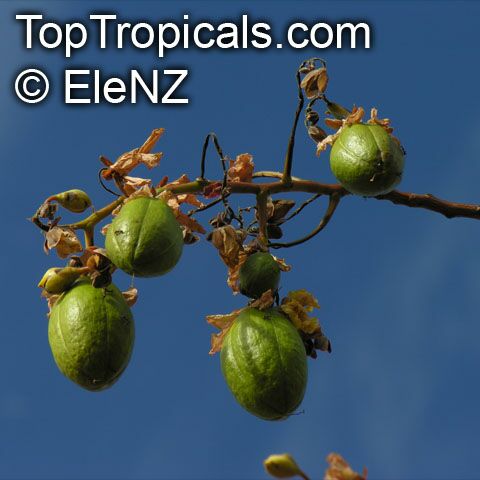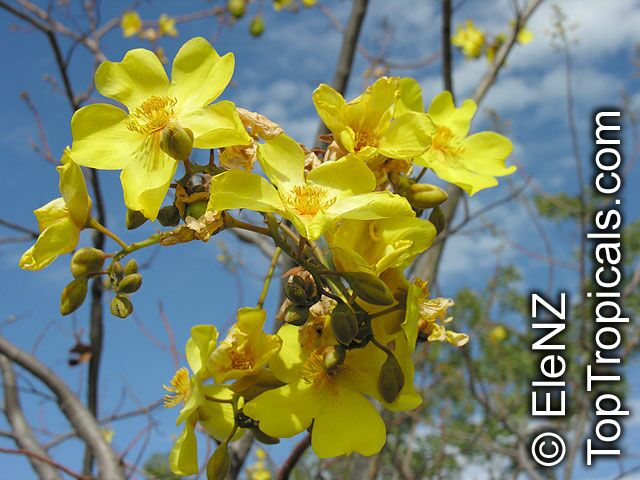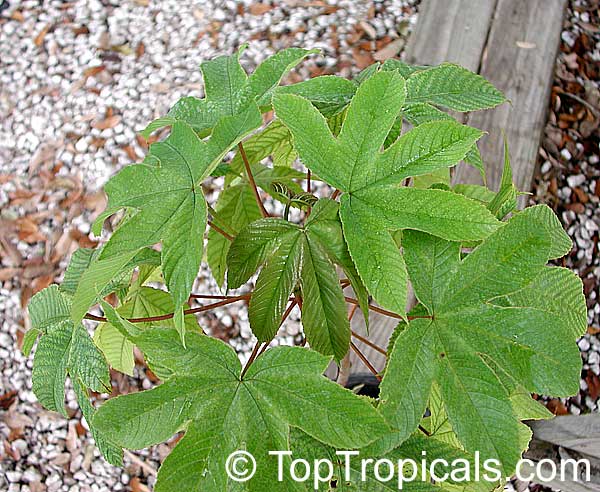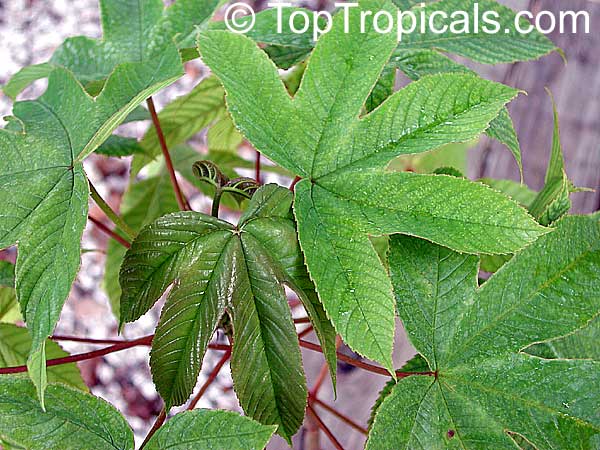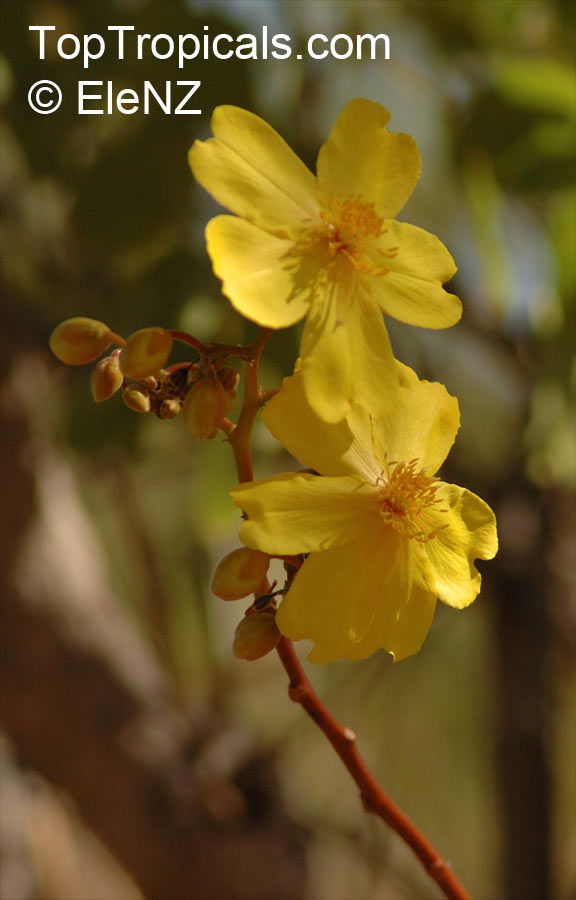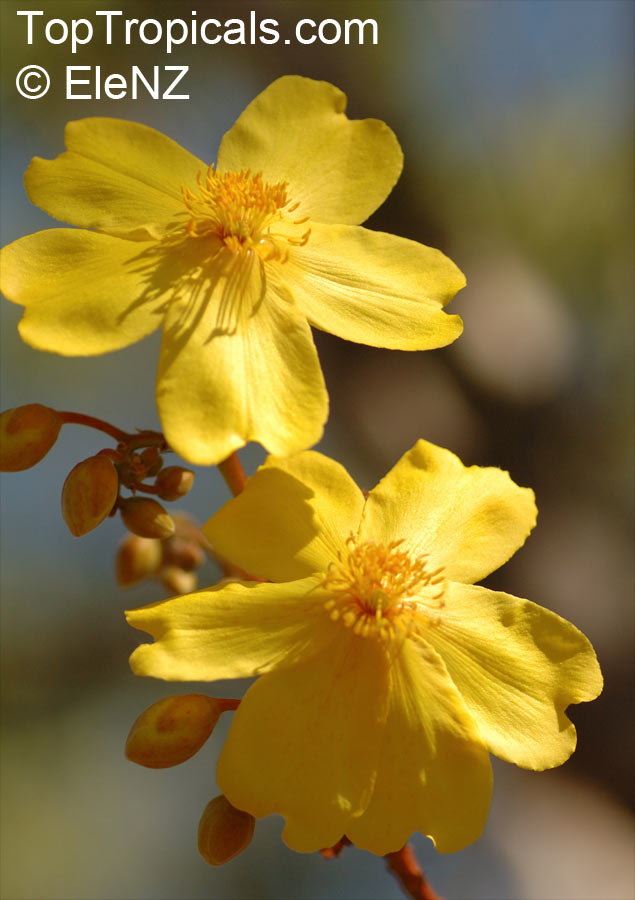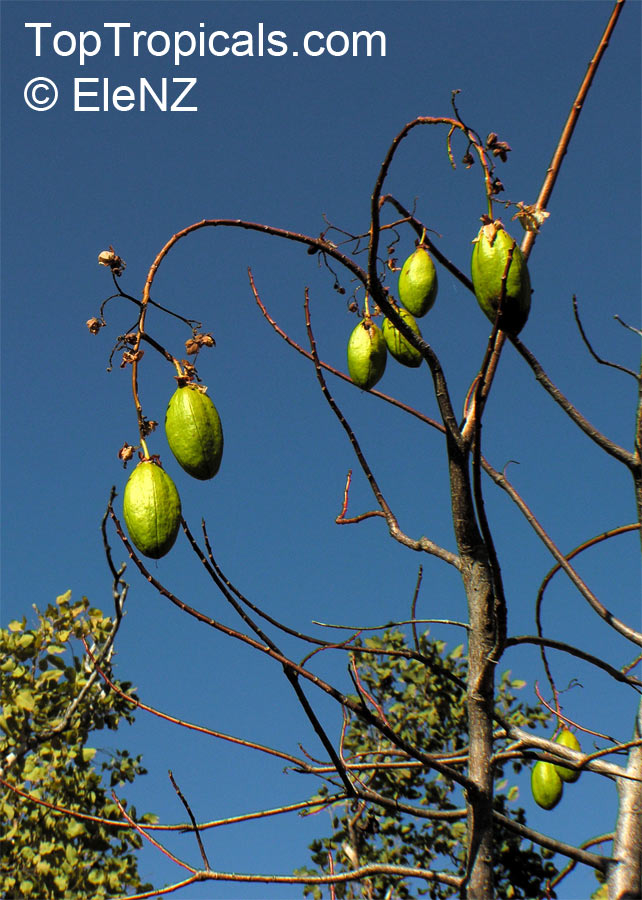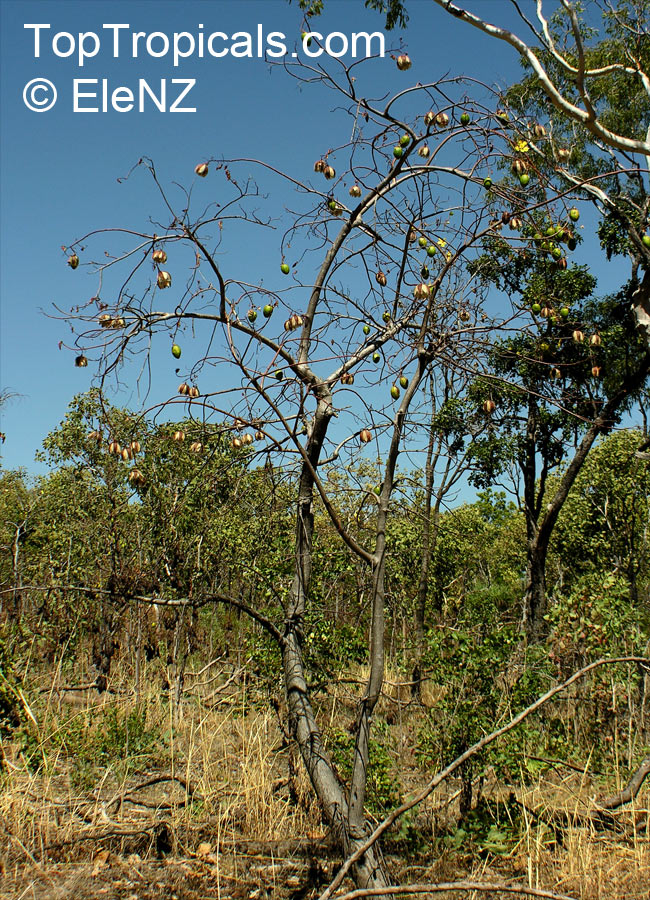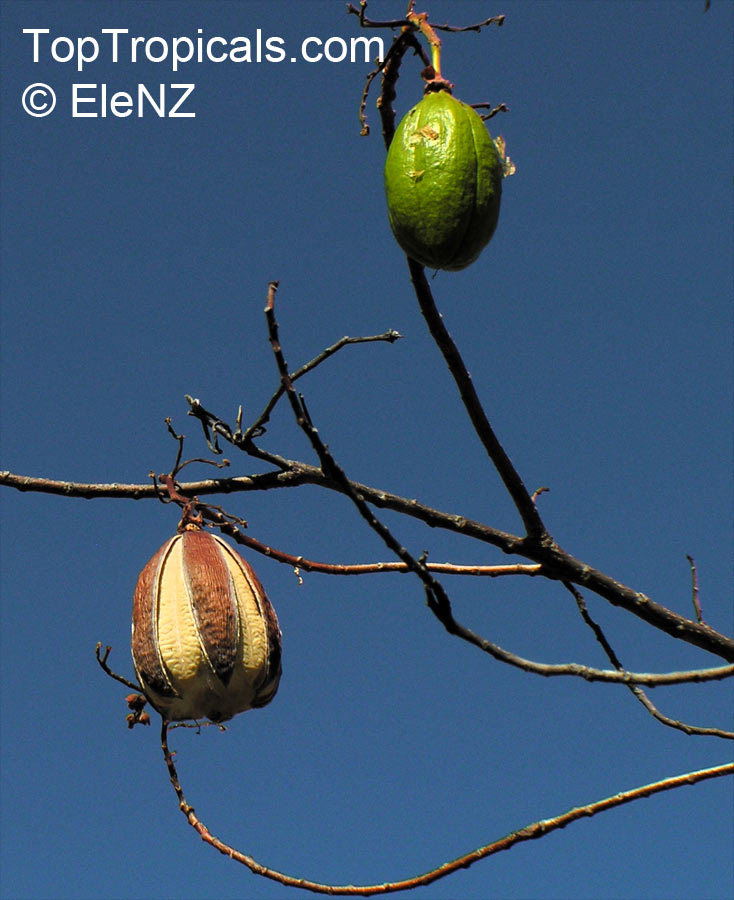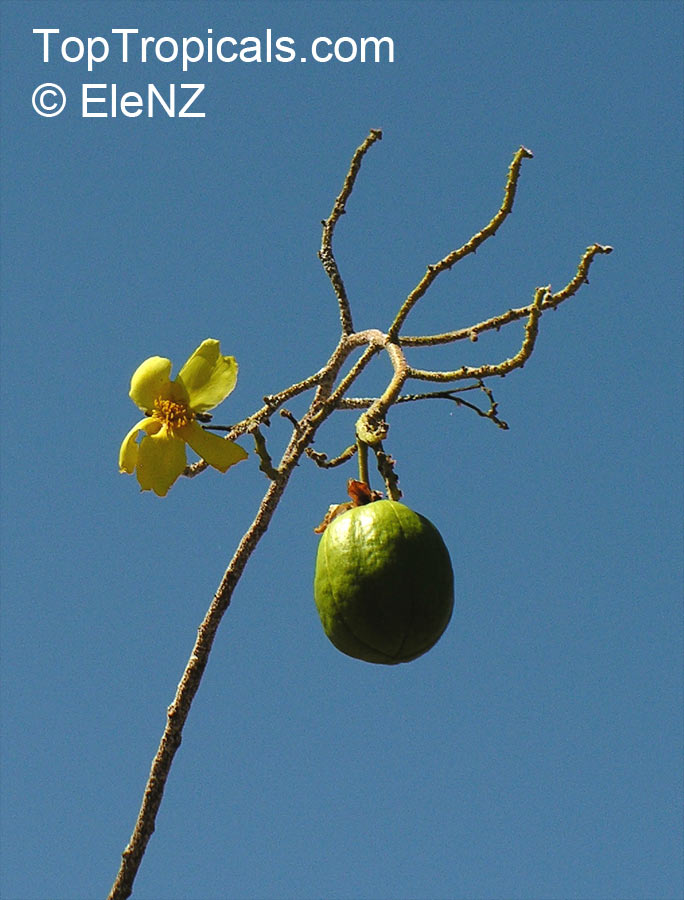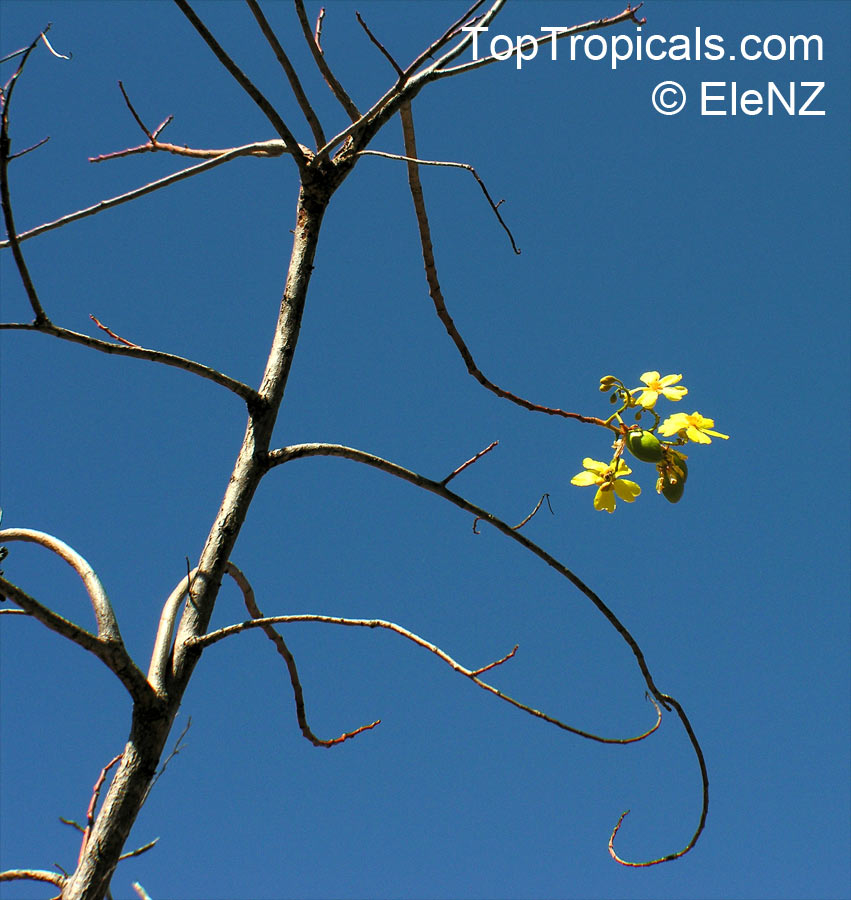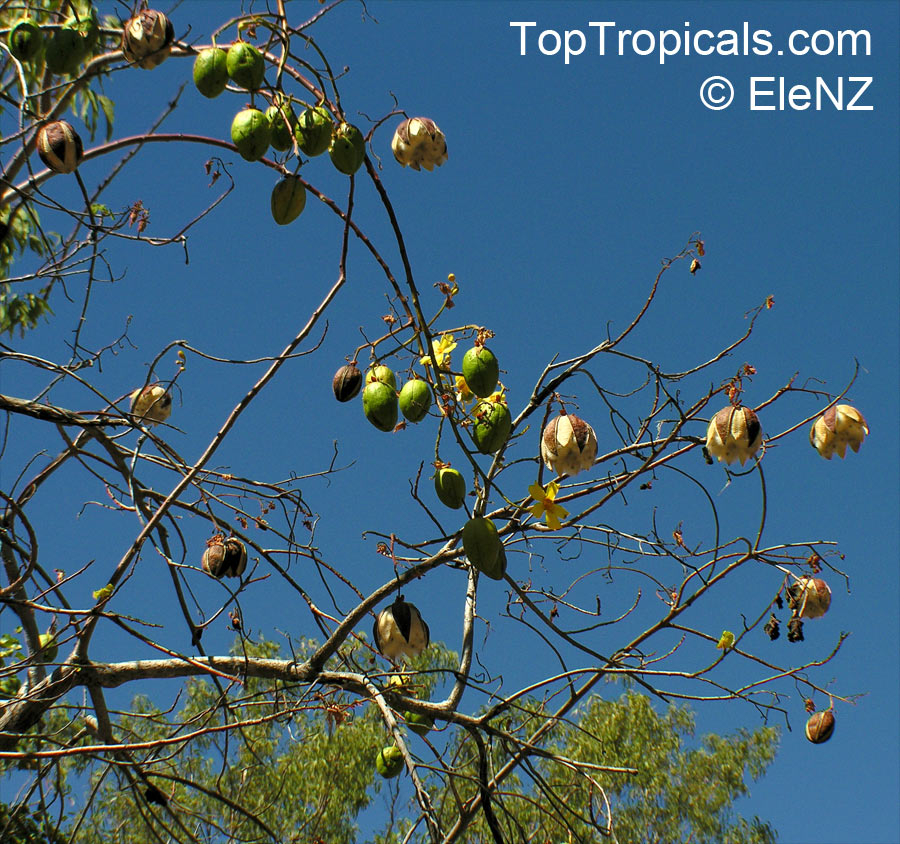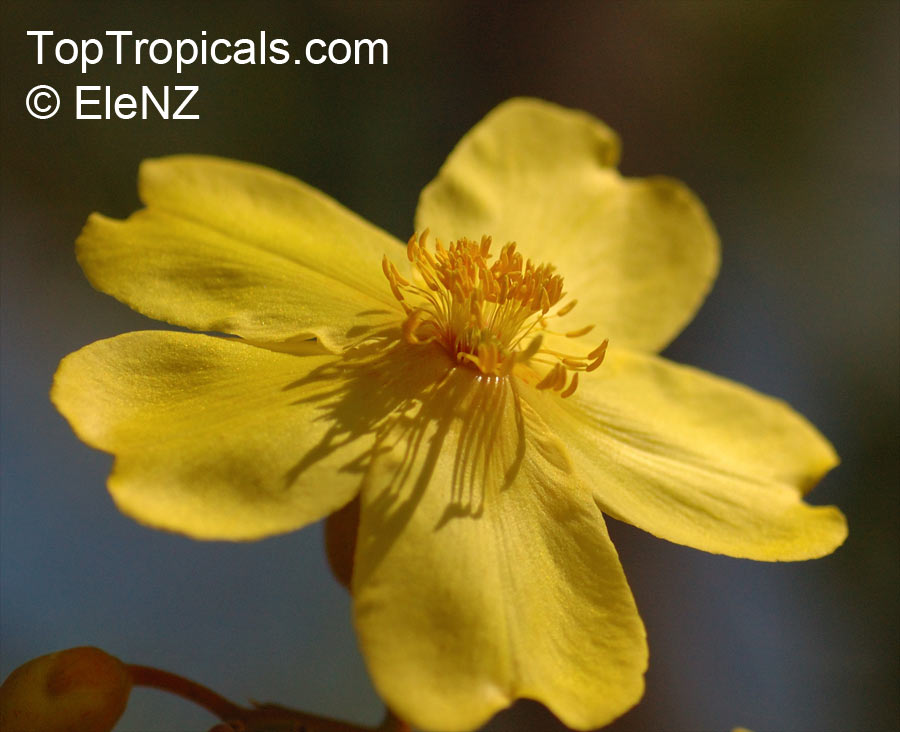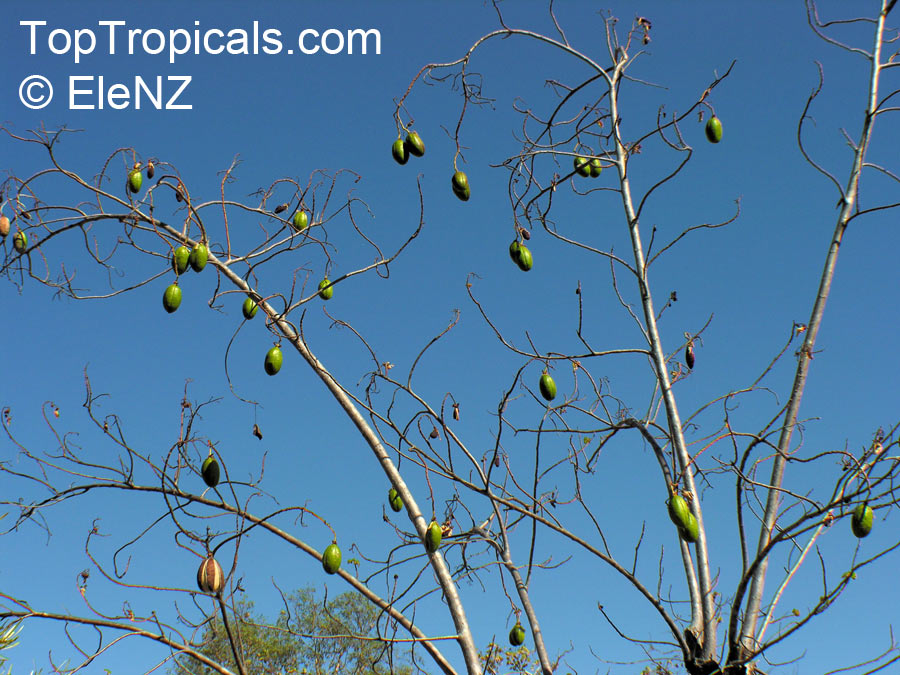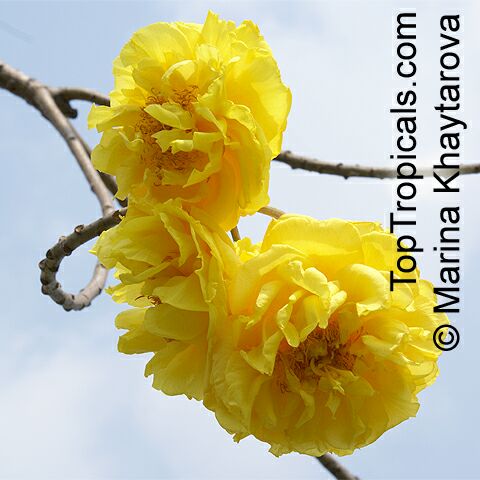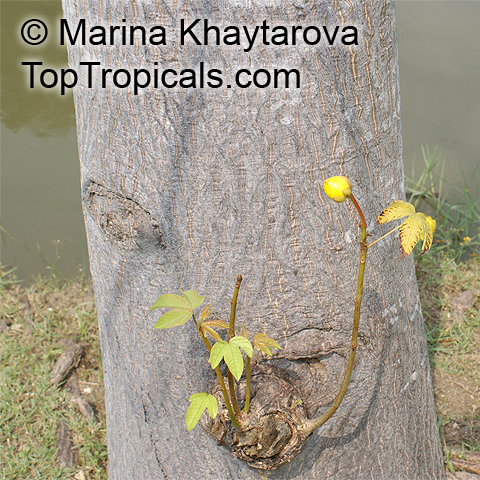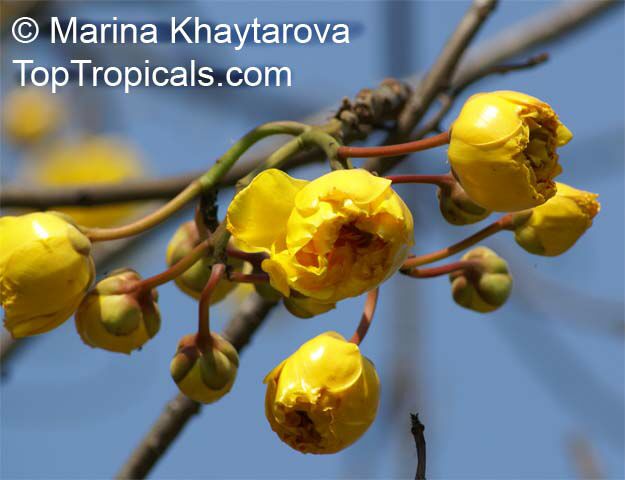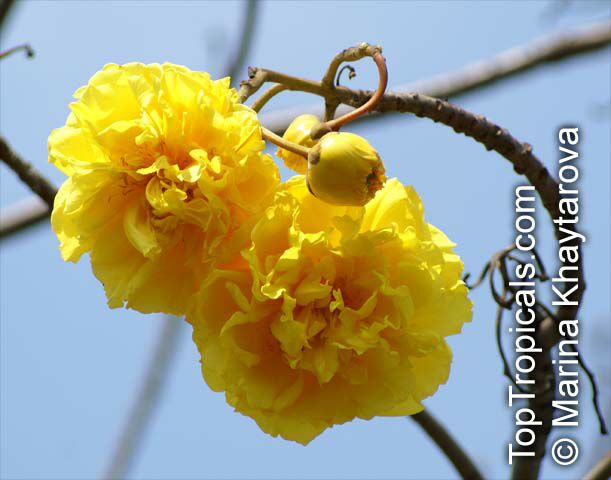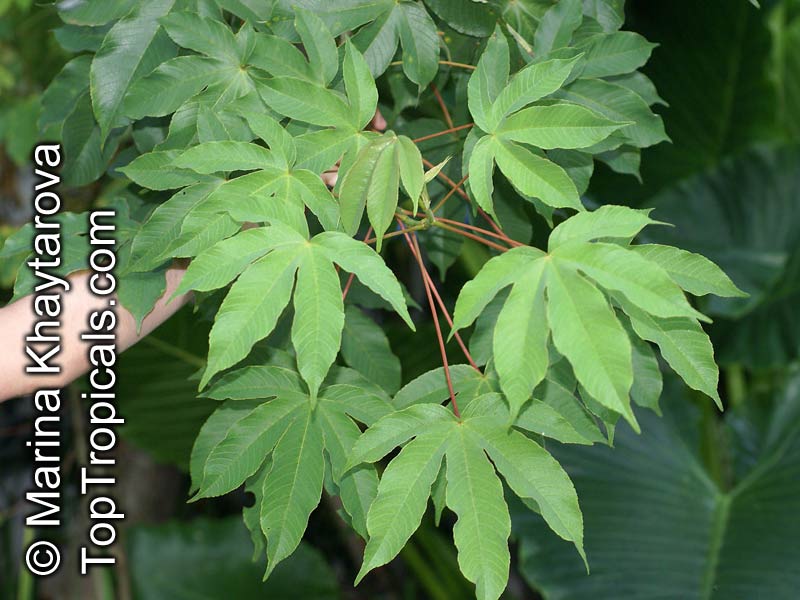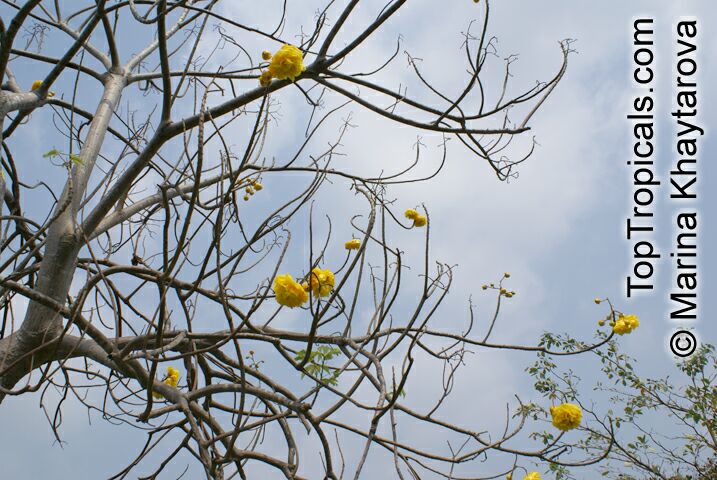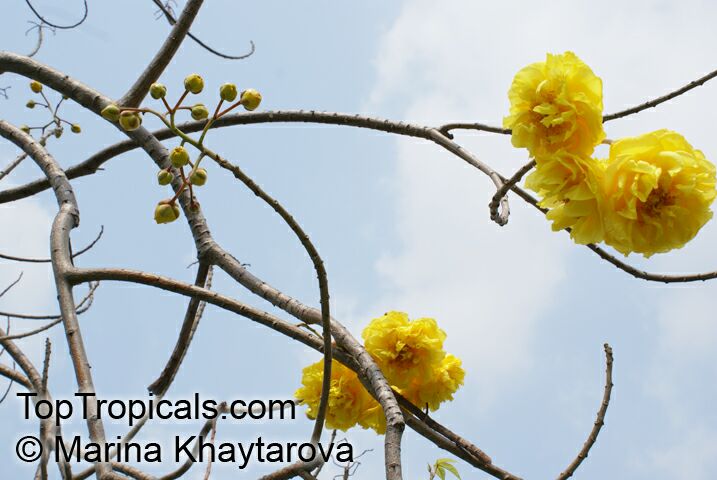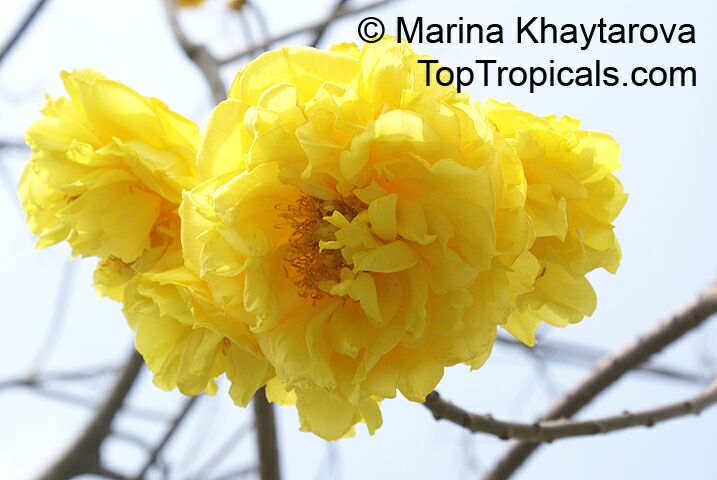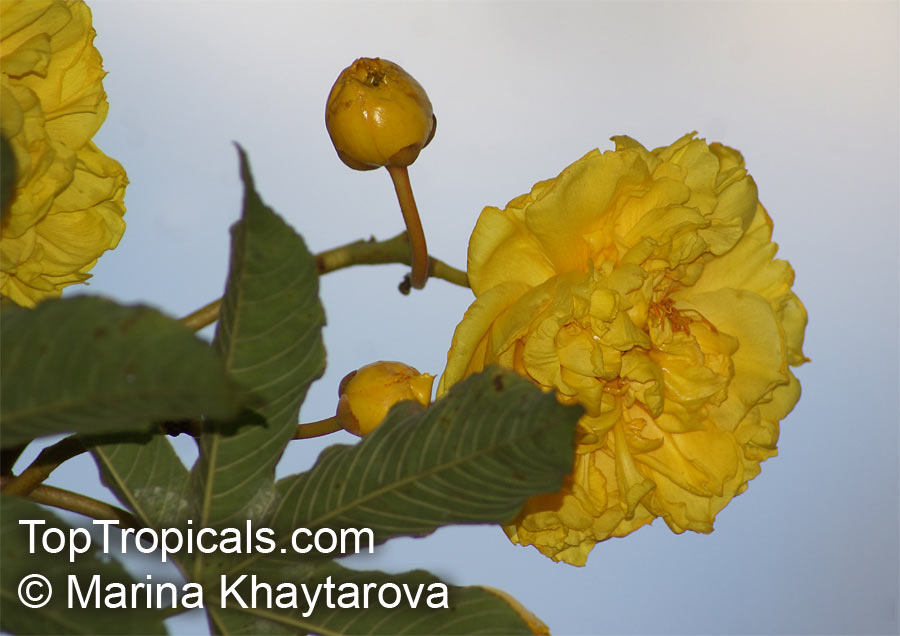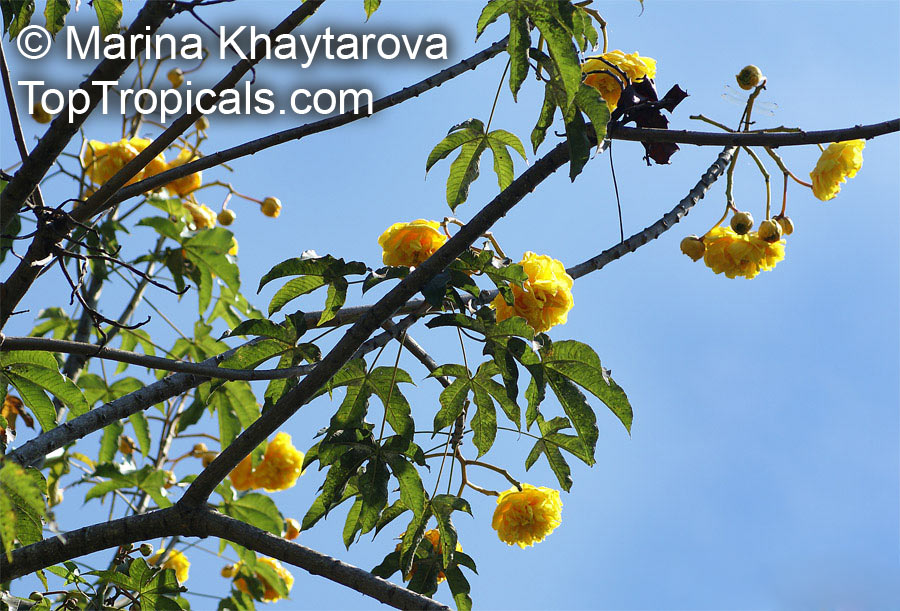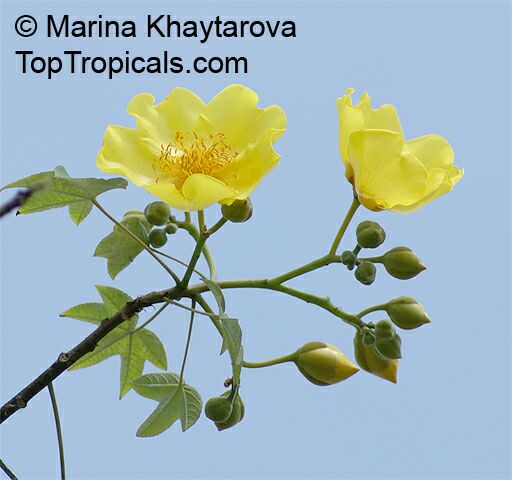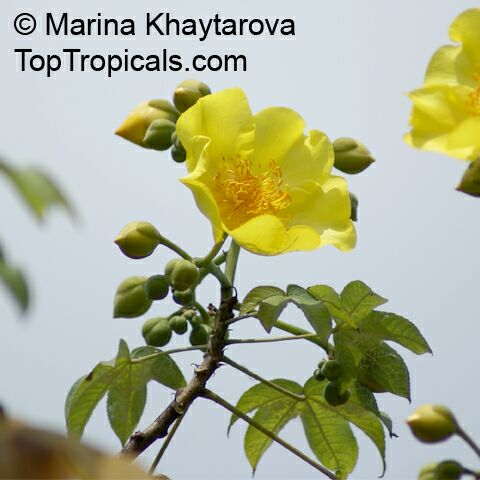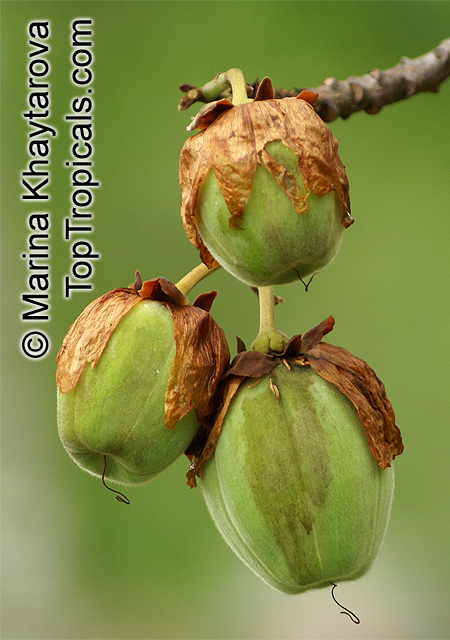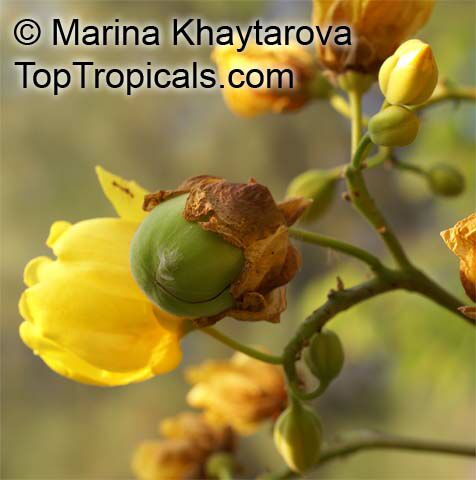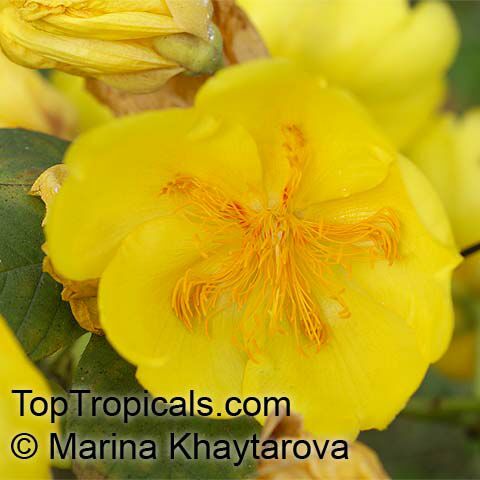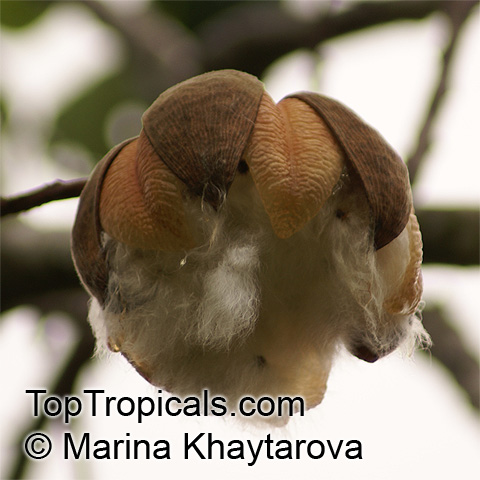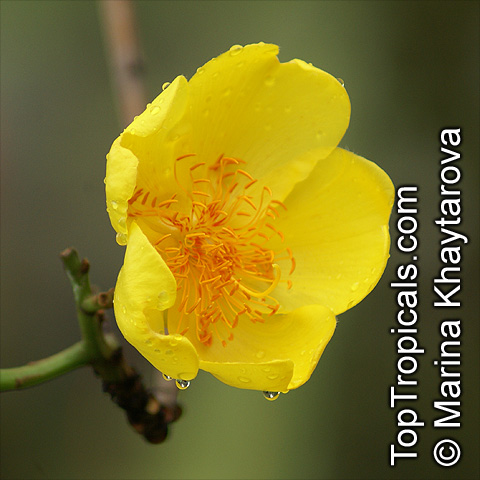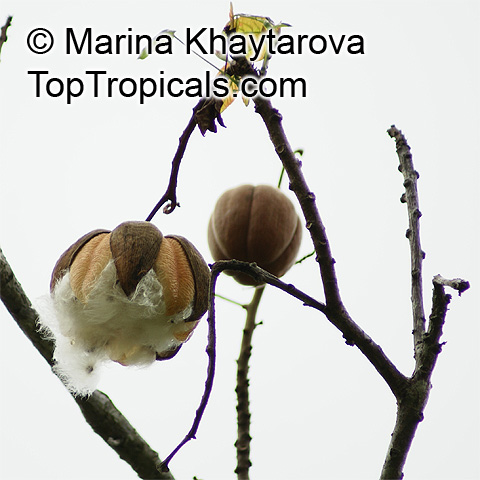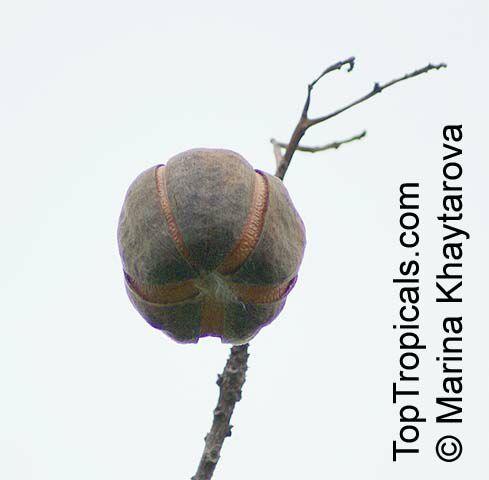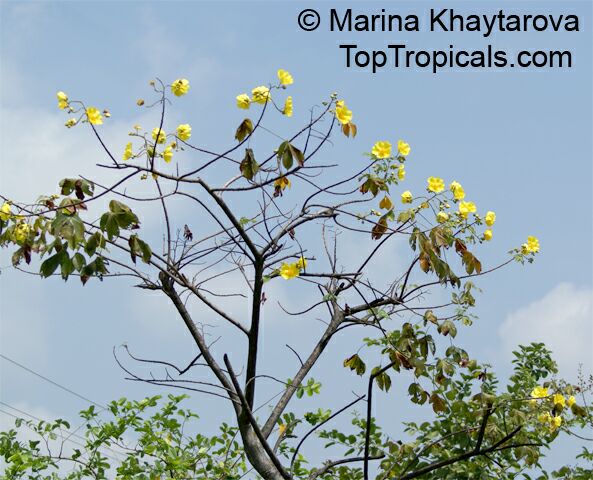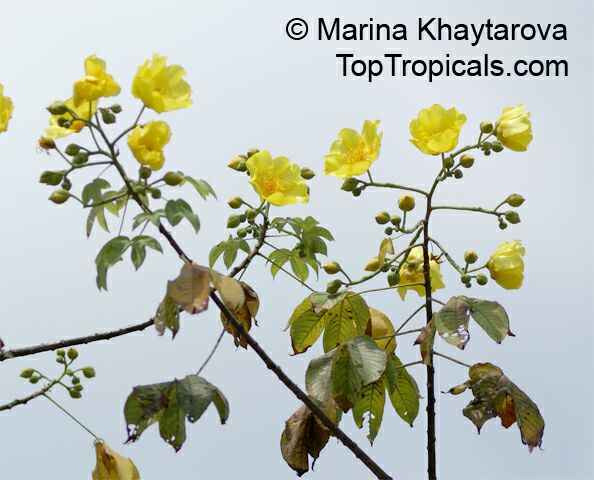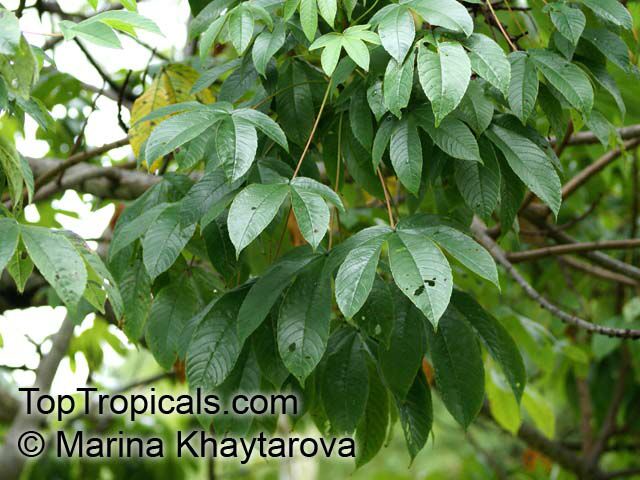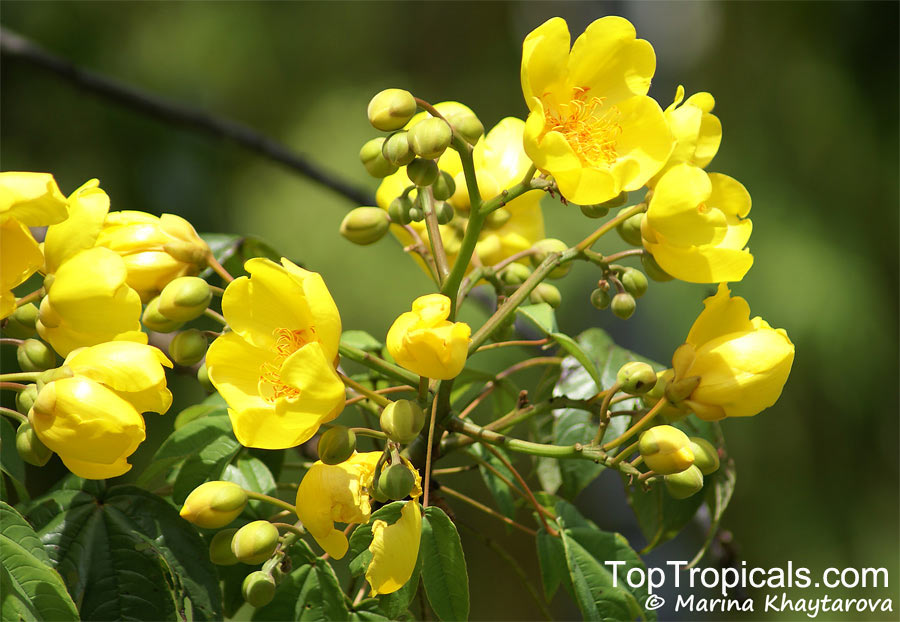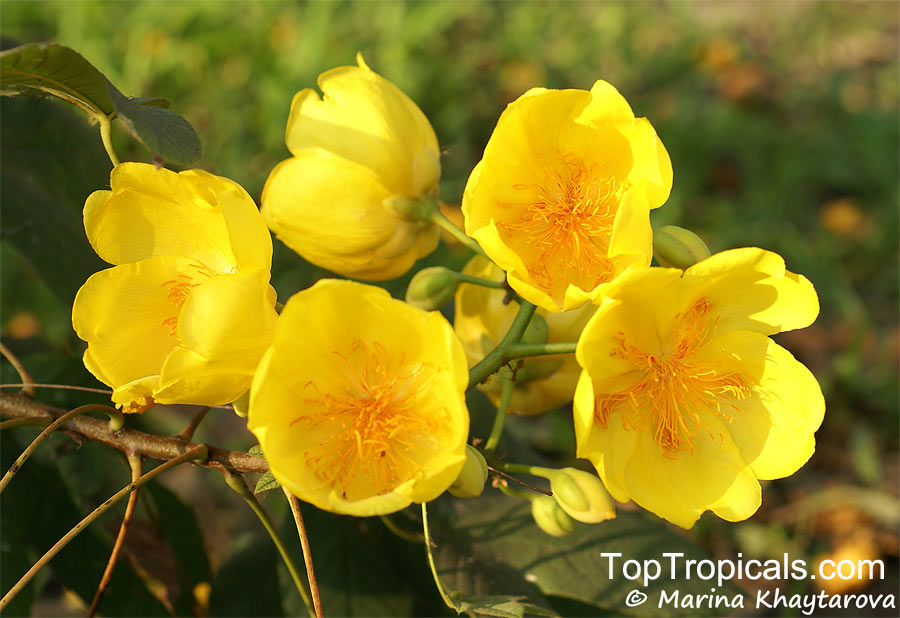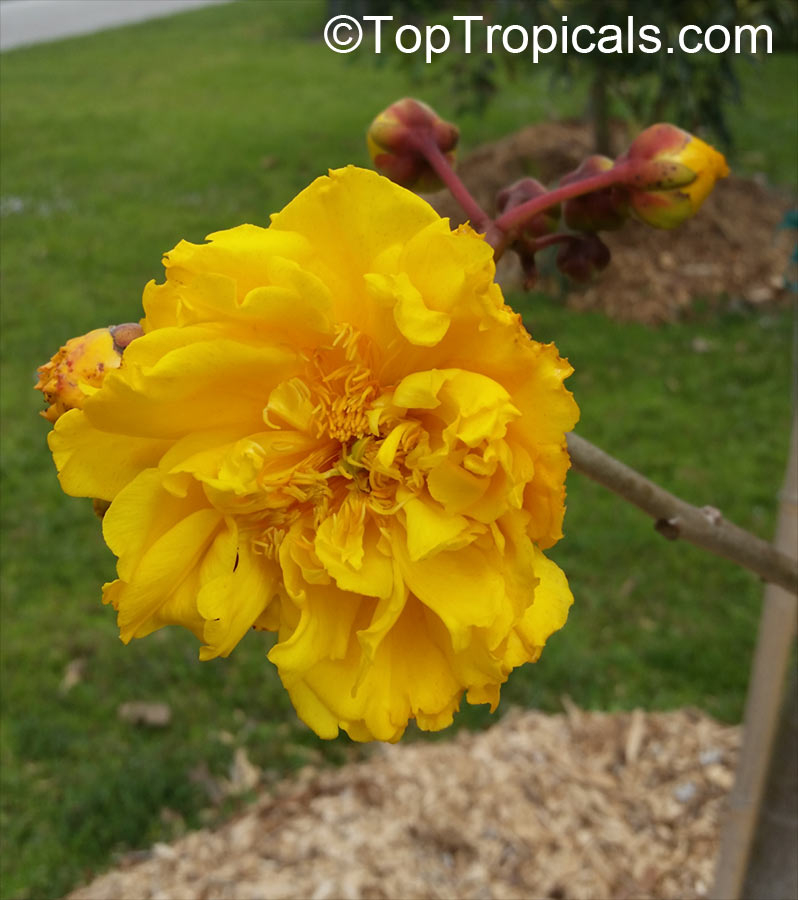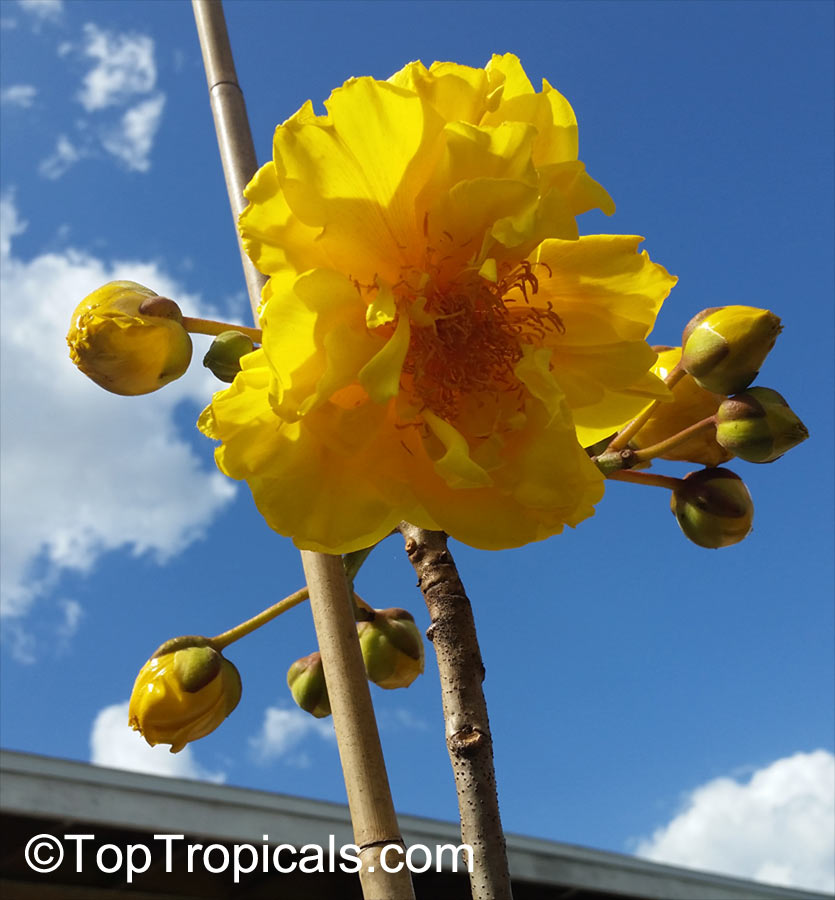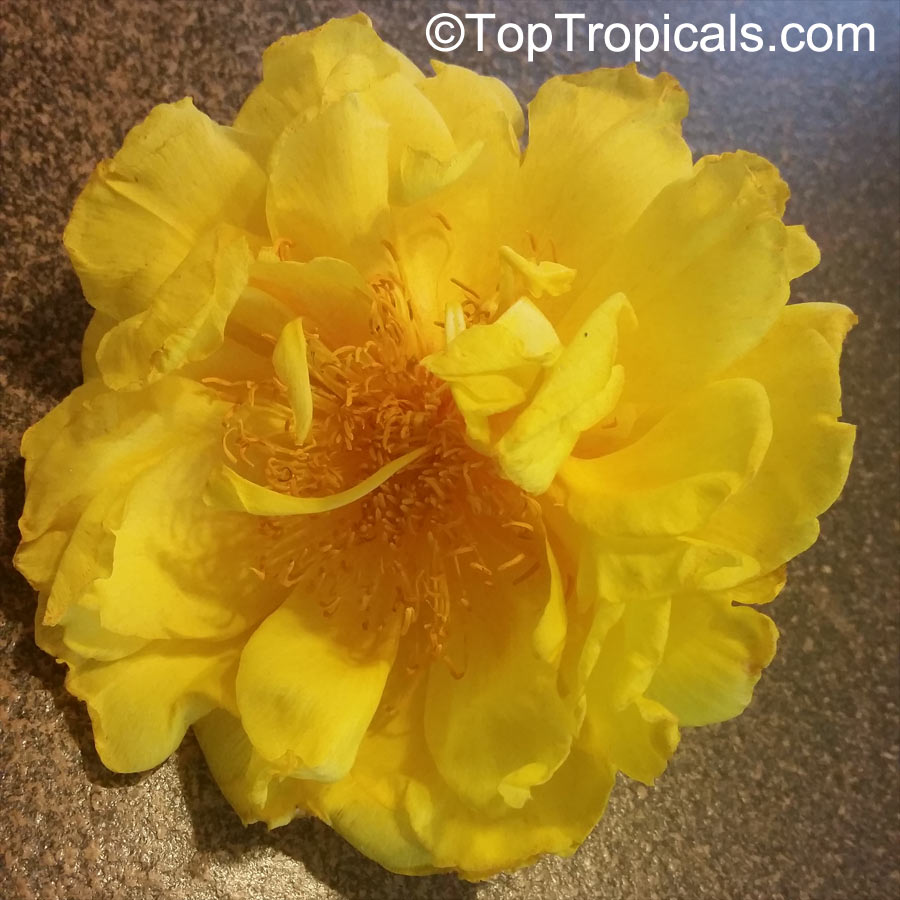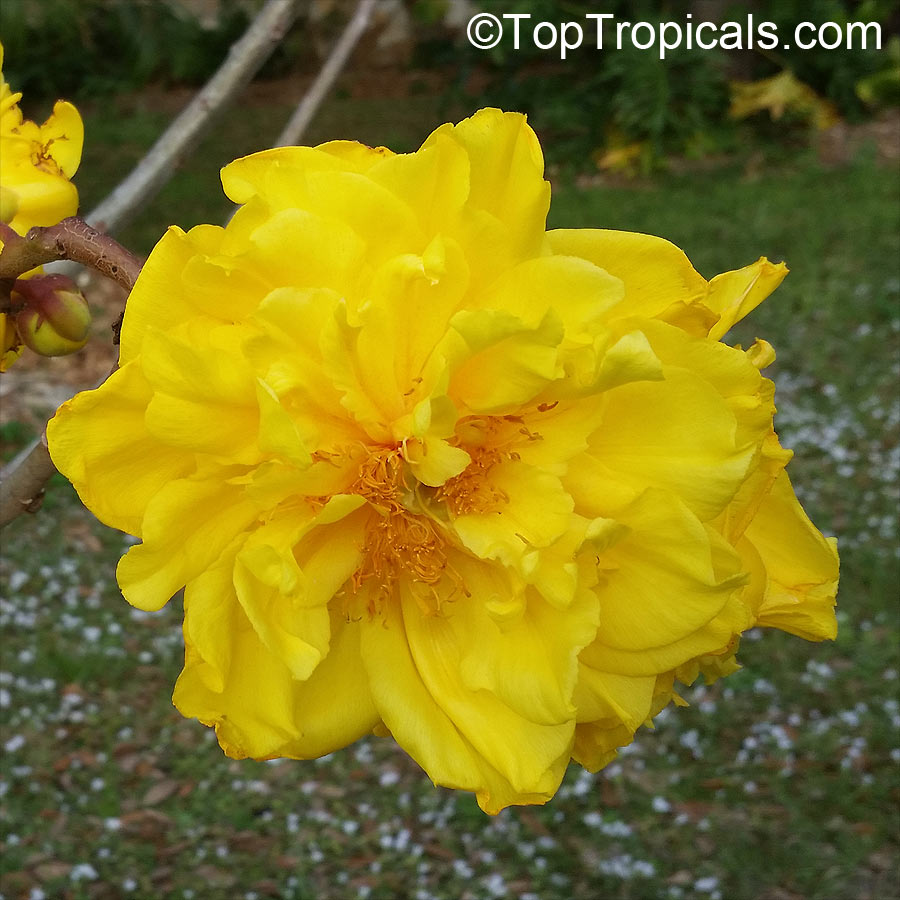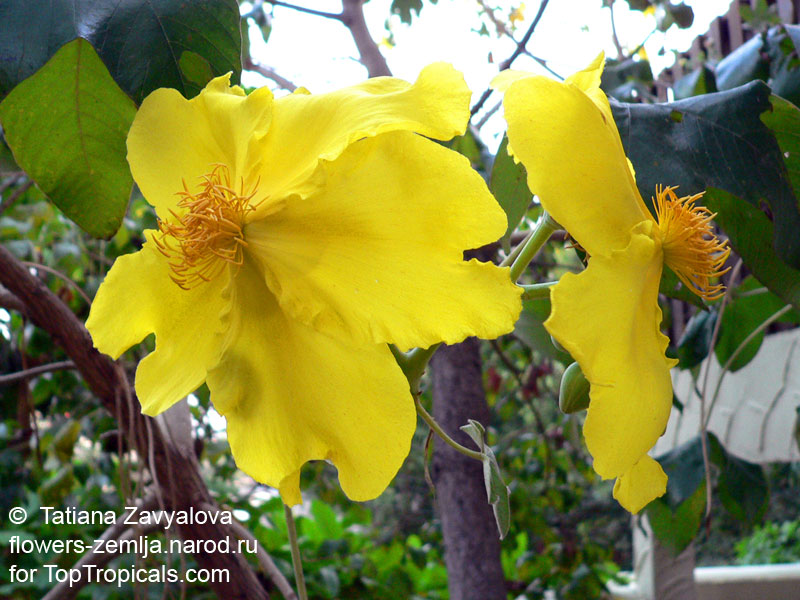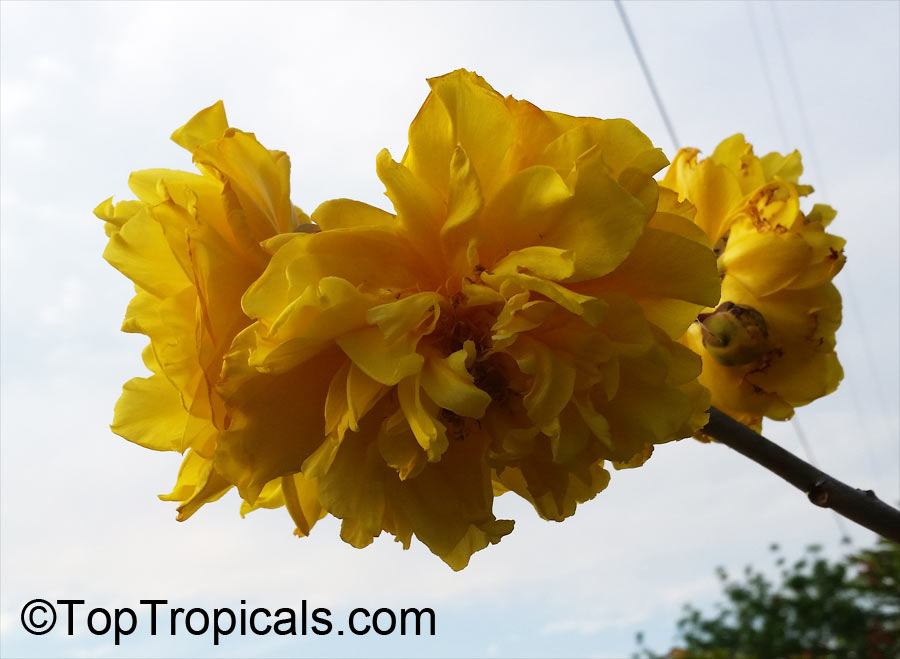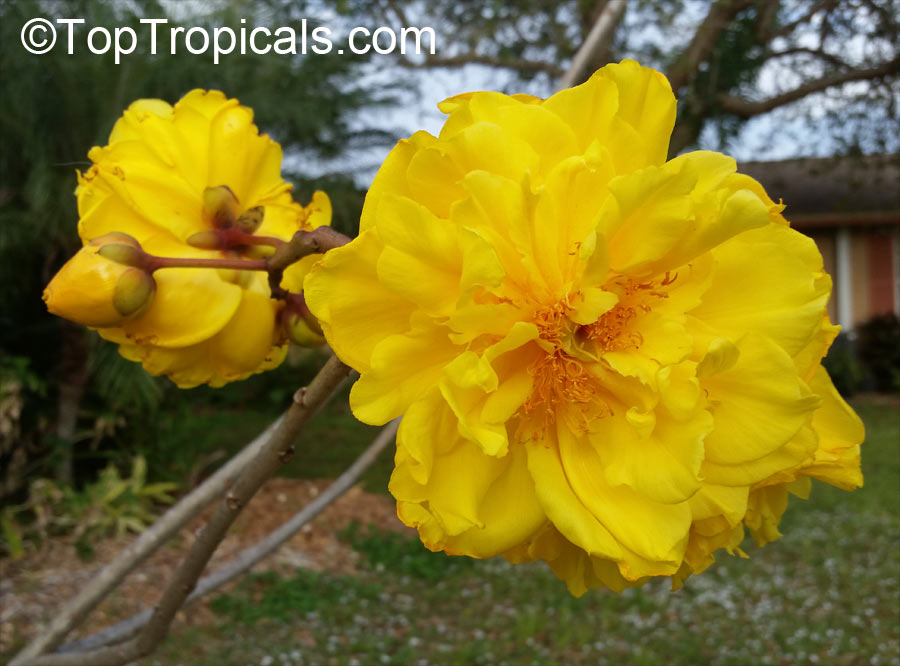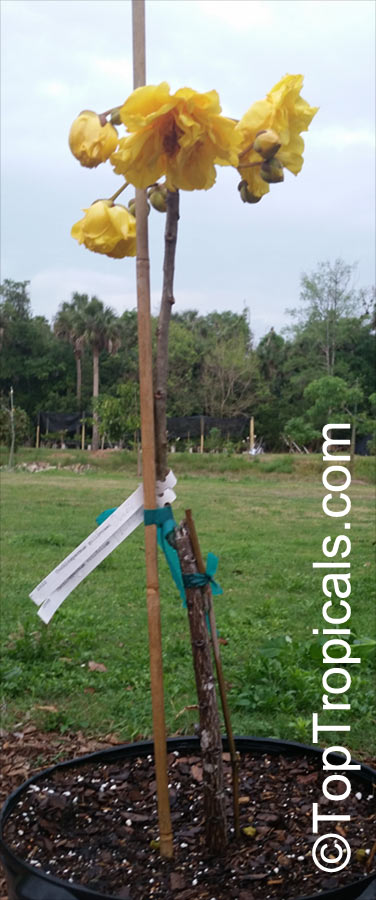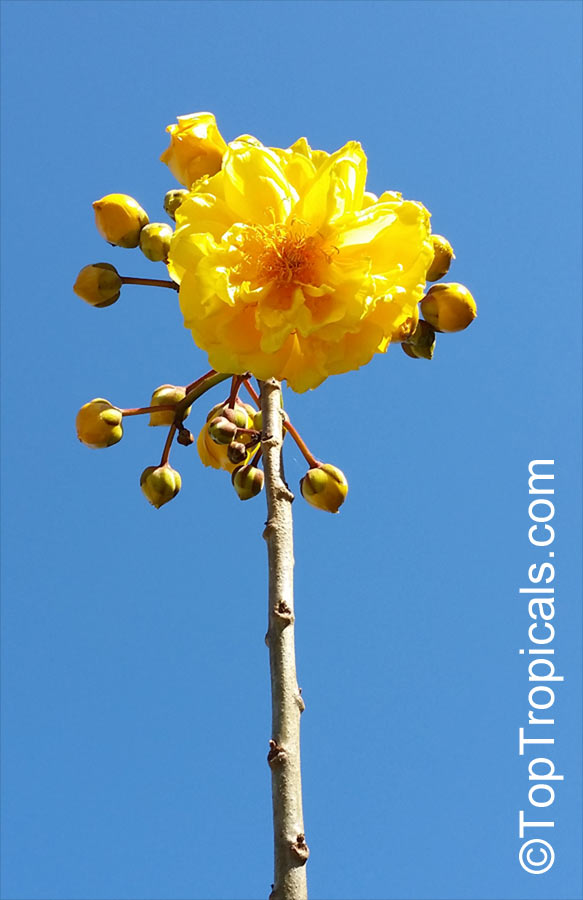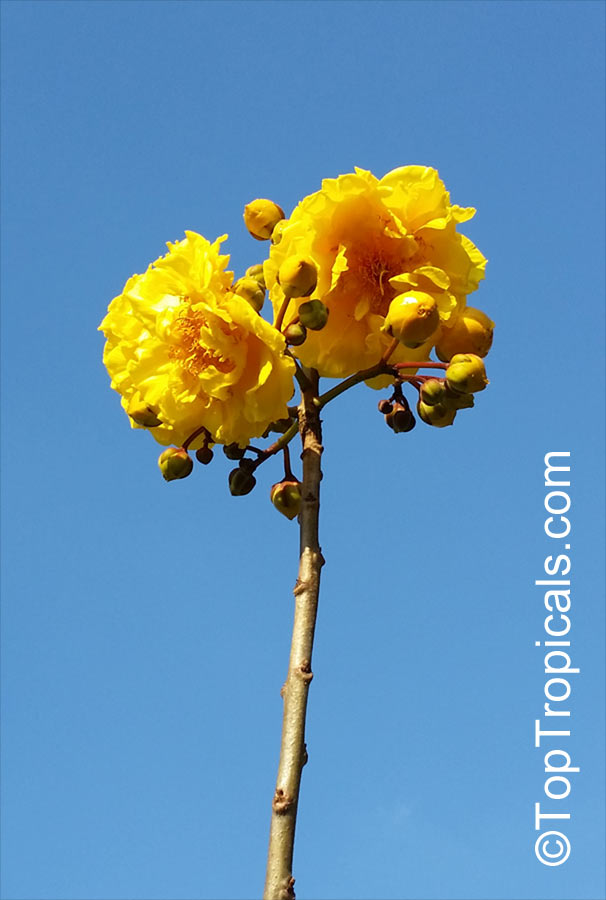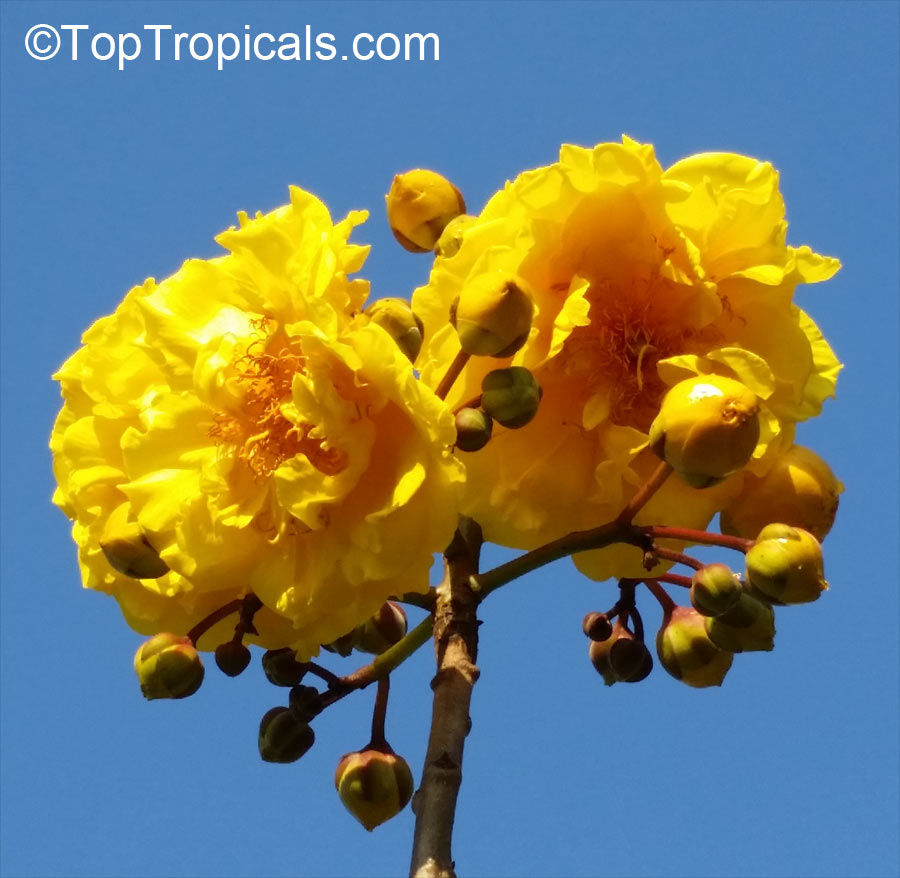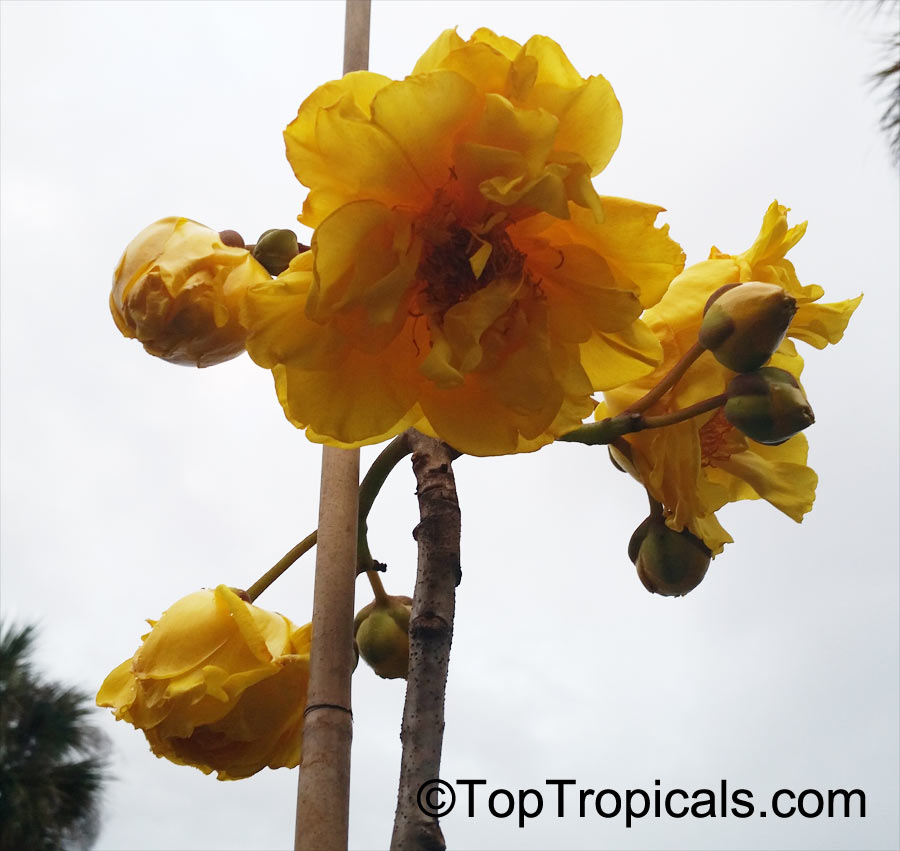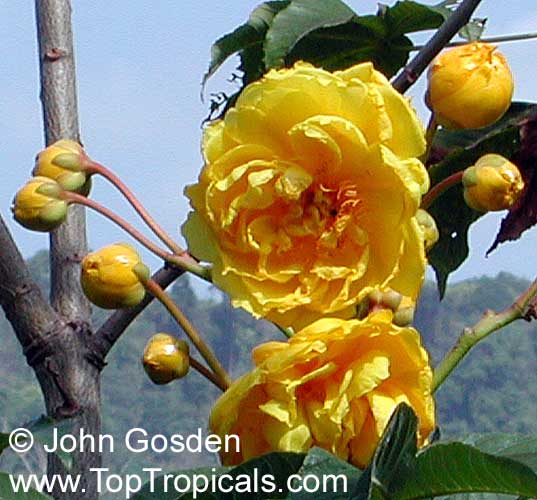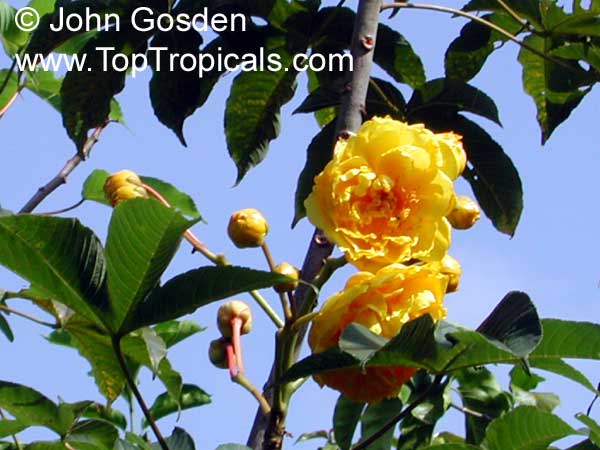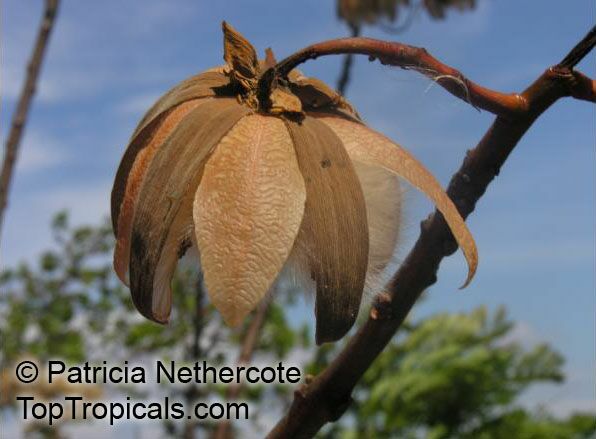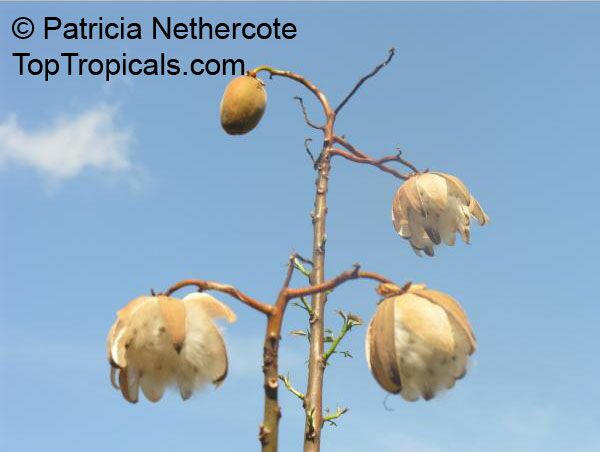Cochlospermaceae - Botanical Family
Top Tropicals Plant Encyclopedia
| Number of plants found: 7 |
Botanical name: Cochlospermum fraseri
Common name: Kapok
Family: Cochlospermaceae
Origin: Australia







Cochlospermum fraseri, commonly known as Kapok, is a deciduous small tree species native to Australia. It typically stands between 10 - 20 ft. tall and has a moderately sparse canopy. This plant is a great addition to any garden and a must have for those who are interested in ethnomedical plants as it has a long-standing tradition of being used for medicinal purposes.
Kapok is a very low maintenance plant that prefers full sun and moderate amounts of water. Its foliage is made up of clustered, alternate, mid-green to yellow, bi- or tri-pinnate leaves. Offset against this are the large, waxy, five-petalled yellow orange flowers that open in late summer. Once pollinated the flowers give rise to large globular green papery fruit which eventually turn to brown and split along the seams to release their seed. These small black seeds are protected by dense mats of fine silky hairs.
Kapok is an attractive small tree that not only adds vibrant color to gardens, but also attracts butterflies and hummingbirds. In order to thrive, it requires well-drained soil and should be grown in USDA zone 9-11. In areas with cooler temperatures its growth is slowed down, thus making container gardening a great option. In cold regions it should be planted in a frost-free area before winter and protected with a suitable mulch when temperatures drop. During the active growing season the soil should remain moist; however in winter the Kapok tree should not be over-watered, as standing water can cause root rot and cause death of the plant.
This specie of tree has long been used for medicinal purposes and is also understood to have certain antioxidant and anti-inflammatory properties. Kapok is a versatile plant that can be planted for its ornamental value and its medicinal properties. As such, it is a great addition to any garden.
Botanical name: Cochlospermum gillivraei
Common name: Kapok
Family: Cochlospermaceae
Origin: North Australia







Cochlospermum gillivraei is a small tree, 3 to 12 metres in height, which is deciduous in the dry season. The bright yellow flowers appear before the new leaves. Seeds are borne in egg-shaped capsules,about 8 cm long, which split open when ripe to release black seeds embedded in a cotton-like fibre.
In cultivation the plant needs well drained soils and a sunny position.
Kapok may be propagated from seed.
Botanical name: Cochlospermum gregorii
Common name: Cotton Tree
Family: Cochlospermaceae
Origin: Australia





Botanical name: Cochlospermum regium
Common name: Yellow Cotton Tree
Family: Cochlospermaceae
Origin: South America








Botanical names: Cochlospermum religiosum, Cochlospermum gossypium
Common name: Silk Cottontree
Family: Cochlospermaceae
Origin: Indo-China







A very common and conspicuous tree, characteristic of the hottest, driest and stoniest slopes. The leaves are palmately 5-lobed. Flowers are large, bright golden yellow. Seeds covered with silky hairs.
Botanical name: Cochlospermum sp.
Common name: Yellow Cotton Tree
Family: Cochlospermaceae









The 30-odd species of the genus of shrubs and small trees are scattered throughout the tropics, growing mainly in regions of strongly seasonal rainfall, and are mostly deciduous in the dry season.
Species:
Botanical name: Cochlospermum vitifolium
Common names: Buttercup tree, Mountain Cotton, Cotton-tree
Family: Cochlospermaceae
Origin: South America







This plant loves full sun and moderate water during the summer growing season. Water sparingly during the dormant season of the winter months. Cochlospermum vitifolium will attract butterflies, hummingbirds and other beneficial pollinators to your garden. It is a deciduous plant, that will shed its leaves in the winter. This plant is native to South America and is found normally in USDA Zones 9-11, but can also be grown in colder regions in a pot. It can tolerate some light frost but mature plants can survive temperatures down to the 30sF for a short time. This plant is also salt tolerant, making it a great choice for seaside areas. With proper care and maintenance this plant will bring you years of joy!
Use link to repeat this search:
https://toptropicals.com/cgi-bin/garden_catalog/cat.cgi?search_op=and&keyword_op=and&language=e&family=Cochlospermaceae
&number=10&no_change_lang=1&user=tt&sale=1&first=0
